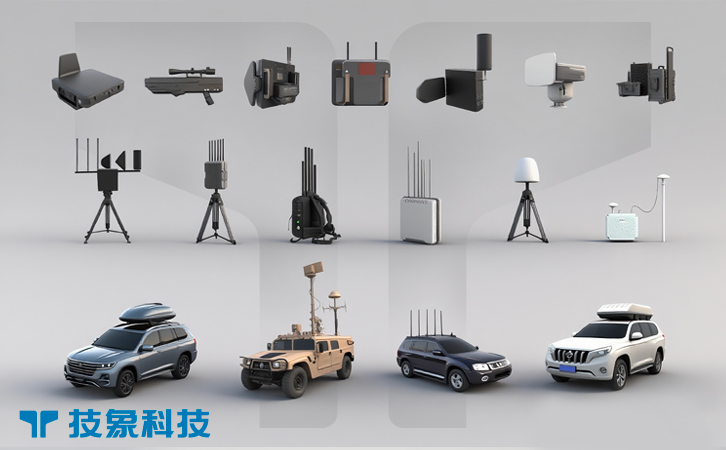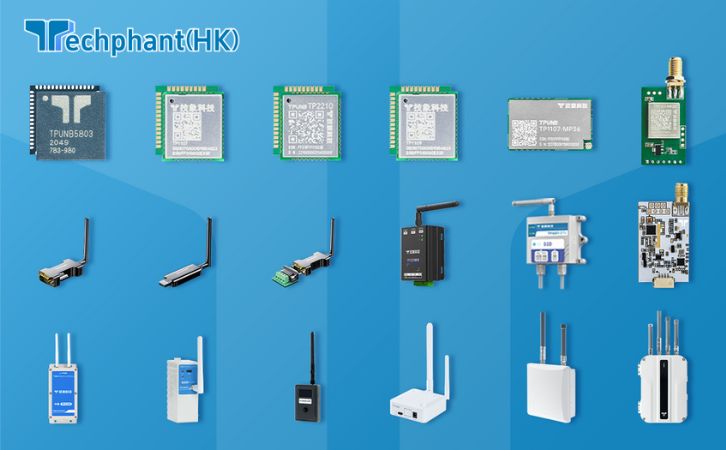The rapid rise in unmanned aerial vehicle (UAV) usage across military, commercial, and civilian applications has driven a surge in demand for anti-UAV technology to counter unauthorized or malicious drones. The anti-UAV market, encompassing detection and neutralization systems like radar, radiofrequency (RF) jammers, and directed-energy weapons, is experiencing significant growth fueled by technological advancements, increasing security concerns, and evolving regulatory landscapes. In 2024, the global anti-UAV market was valued at USD 2.71 billion and is projected to reach USD 11.12 billion by 2030, growing at a compound annual growth rate (CAGR) of 26.53%. This article explores the economic and market trends shaping the anti-UAV technology sector, detailing key drivers, regional dynamics, competitive landscapes, and future opportunities.
I. Market Drivers and Economic Catalysts
The growth of the anti-UAV market is propelled by several economic and security-related drivers. The proliferation of affordable drones, with global UAV sales reaching USD 36.41 billion in 2024 and projected to hit USD 125.91 billion by 2032, has heightened the need for countermeasures to protect critical infrastructure, military bases, and public spaces. Incidents like the 2018 Gatwick Airport drone disruption, which affected 140,000 passengers, underscore the economic and societal risks of unauthorized drones, driving investments in anti-UAV systems. Governments and private sectors are allocating substantial budgets to address these threats, with global military spending reaching USD 2.44 trillion in 2023, a portion of which supports anti-UAV development.
Technological advancements, particularly in AI and machine learning, enhance anti-UAV system capabilities, enabling real-time detection and neutralization of drones. These innovations attract significant R&D investments, with companies like Raytheon and Lockheed Martin developing advanced radar and directed-energy systems. The commercial sector also contributes to market growth, as industries like event management and critical infrastructure protection adopt portable anti-UAV solutions for temporary security needs. Economic incentives, such as government contracts and public-private partnerships, further fuel market expansion. For instance, the U.S. Department of Defense’s 2024 budget of USD 500 million for UAV-related technologies indirectly supports anti-UAV development by addressing complementary security needs. The rising threat of drone-enabled illicit activities, such as smuggling and espionage, continues to drive demand, positioning anti-UAV technology as a critical component of modern security ecosystems.
II. Regional Market Dynamics
The anti-UAV market exhibits distinct regional trends, influenced by economic development, defense budgets, and regulatory frameworks. North America dominates the market, holding a 35% share in 2024, driven by substantial U.S. defense investments and a robust technological ecosystem. The U.S. market benefits from major players like Raytheon and AeroVironment, supported by military contracts and FAA regulations that facilitate anti-UAV deployment for homeland security. The U.S. alone accounted for USD 361.8 million of the global anti-UAV market in 2023, with growth fueled by applications in border surveillance and critical infrastructure protection.
The Asia-Pacific region is the fastest-growing market, projected to achieve a CAGR of over 25% from 2025 to 2030, driven by increasing defense budgets and regional security concerns. China, a leader in UAV production, is also investing heavily in anti-UAV systems, with its military UAV market capturing significant revenue share in 2024. Countries like India are adopting anti-UAV technologies for border security, as evidenced by the 2023 procurement of counter-drone systems following drone incursions along its borders. Europe holds the second-largest market share, with Germany leading due to its defense modernization programs and a 23.4% market share in 2025. The EU’s focus on privacy and aviation safety, enforced by EASA and GDPR, shapes deployment strategies, particularly for non-kinetic systems like RF jammers. Latin America and Africa lag behind, with slower adoption due to economic and political constraints, though countries like Brazil are beginning to invest in anti-UAV systems for government security. These regional dynamics highlight the interplay of economic capacity and security priorities in driving market growth.
III. Competitive Landscape and Key Players
The anti-UAV market is highly competitive, with major defense contractors and specialized firms vying for market share. Leading players include Raytheon Technologies, Lockheed Martin, Thales, DroneShield, and Dedrone, each leveraging expertise in radar, sensors, and electronic warfare. Raytheon’s HELWS laser system and Lockheed Martin’s RF-based countermeasures are prominent in military applications, while DroneShield’s DroneSentry offers integrated detection and disruption for commercial and homeland security use. These companies benefit from economies of scale, securing large government contracts, such as the U.S. Army’s selection of Anduril for tactical UAV countermeasures in 2024.
Smaller firms and startups are also gaining traction by focusing on niche solutions, such as portable jammers or AI-driven detection systems. For example, Dedrone’s DroneTracker software uses machine learning to analyze drone behavior, appealing to commercial clients like airports and stadiums. Mergers, acquisitions, and partnerships are shaping the competitive landscape, as seen in Thales’ 2024 MoU with Garuda Aerospace to develop counter-drone solutions in India. However, high R&D costs and regulatory barriers, such as the U.S. FCC’s restrictions on jamming, pose challenges for smaller players. The market’s fragmentation encourages innovation, with companies investing in multi-layered systems combining radar, RF, and directed-energy technologies to address diverse threats. This competitive environment drives technological advancements but also increases pressure on pricing and scalability, particularly for cost-sensitive commercial markets.
IV. Future Opportunities and Market Challenges
The anti-UAV market presents significant opportunities driven by technological innovation and expanding applications. The integration of AI and machine learning, enabling autonomous detection and neutralization, is a key growth area, with systems like DroneShield’s AI-driven platforms gaining traction. The rise of drone swarms necessitates advanced countermeasures, such as high-powered microwave (HPM) systems, which are expected to drive market growth through 2030. Commercial applications, including securing public events and critical infrastructure, offer new revenue streams, particularly for portable and cost-effective solutions. The expansion of beyond visual line of sight (BVLOS) operations, supported by evolving regulations like the FAA’s Remote ID rule, will further increase demand for anti-UAV systems to ensure airspace safety.
However, challenges persist. Regulatory barriers, such as inconsistent global standards and restrictions on RF jamming, complicate deployment, particularly in civilian settings. The U.S. FAA’s Part 107 rules, for instance, limit counter-drone operations near airports, requiring specialized certifications. Intellectual property theft is another concern, as adversaries may reverse-engineer captured anti-UAV systems, threatening market leaders’ competitive edge. High development costs and the need for continuous innovation to counter evolving drone technologies strain smaller firms. Additionally, economic downturns could delay government contracts, impacting market growth, as seen in the U.S. UAV manufacturing industry’s 5.8% revenue decline from 2019 to 2024. Despite these challenges, the market’s long-term outlook remains strong, with opportunities in emerging markets and advancements in non-kinetic countermeasures like spoofing and AI-driven analytics.
Conclusion
The anti-UAV technology market is poised for robust growth, driven by rising drone threats, increasing defense budgets, and technological advancements in AI and multi-layered countermeasures. With a projected market size of USD 11.12 billion by 2030, the sector is shaped by strong regional dynamics, particularly in North America and Asia-Pacific, and a competitive landscape featuring both established defense giants and innovative startups. While regulatory challenges and high R&D costs pose hurdles, opportunities in commercial applications and emerging technologies like HPM systems promise continued expansion. As global security needs evolve, anti-UAV systems will remain a critical investment, balancing economic viability with the imperative to protect airspace from increasingly sophisticated drone threats.



